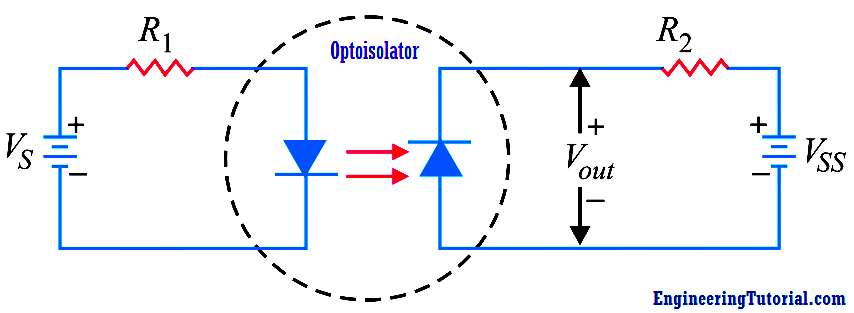An optoisolator (also called optocoupler) is a device that uses light to couple a signal from its input
(a photoemitter e.g., a LED) to its output (a photodetector e.g., a photo-diode).

The above Fig. shows a LED-photo diode optoisolator. The LED is on the left and the photo-diode is on the right. The arrangement shown in Fig. is referred to as optocoupling because the output from the LED circuit is coupled via light to the photo-diode circuit. When the LED is energised, current flows through the LED. The light from the LED hits the photo diode and sets up a reverse current through resistor R2.
The voltage across the photo-diode is given by :
Vout = VSS – I R2
The output voltage depends on how large the reverse current is. If we vary the LED supply, the amount of light changes and this causes the photo diode current to change. As a result, Vout changes. The key advantage of an optoisolator is the electrical isolation between the input and output circuits; the only contact between the input and output circuits is the stream of light.
